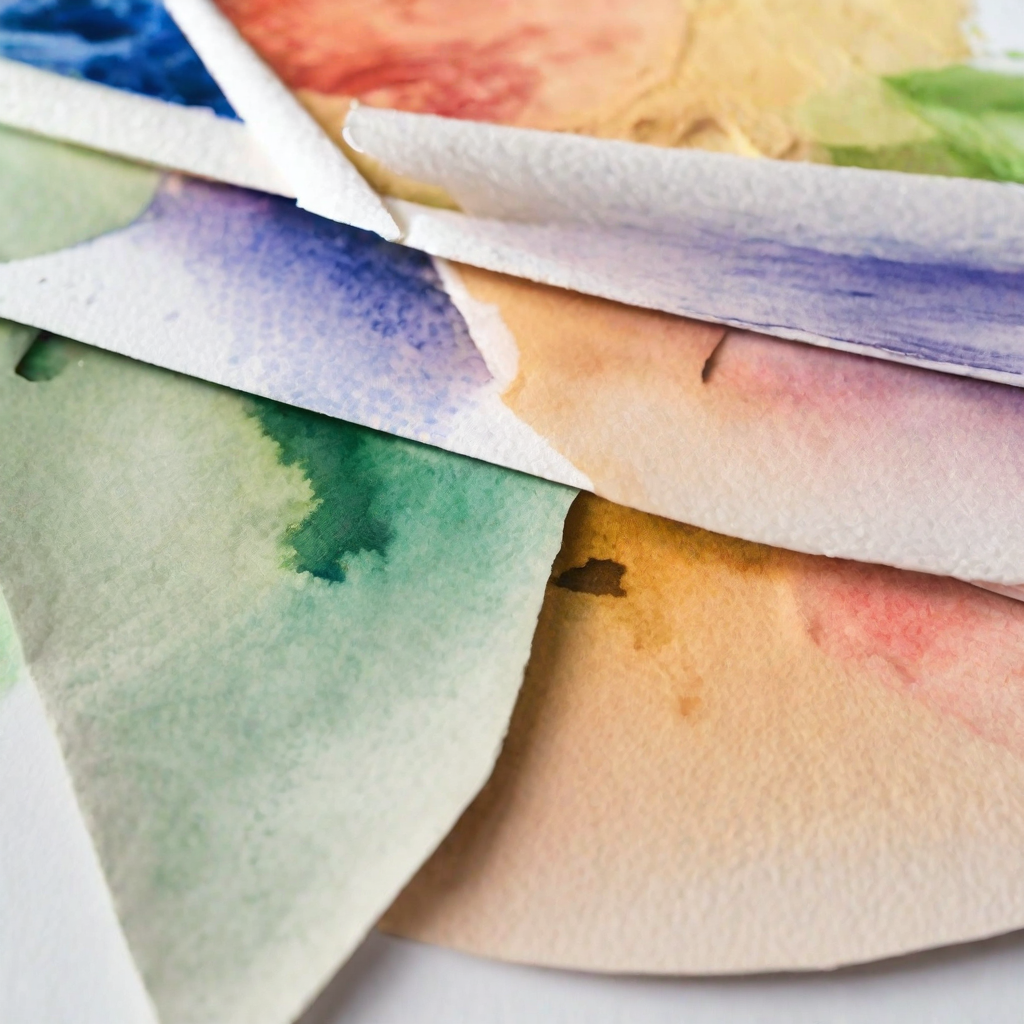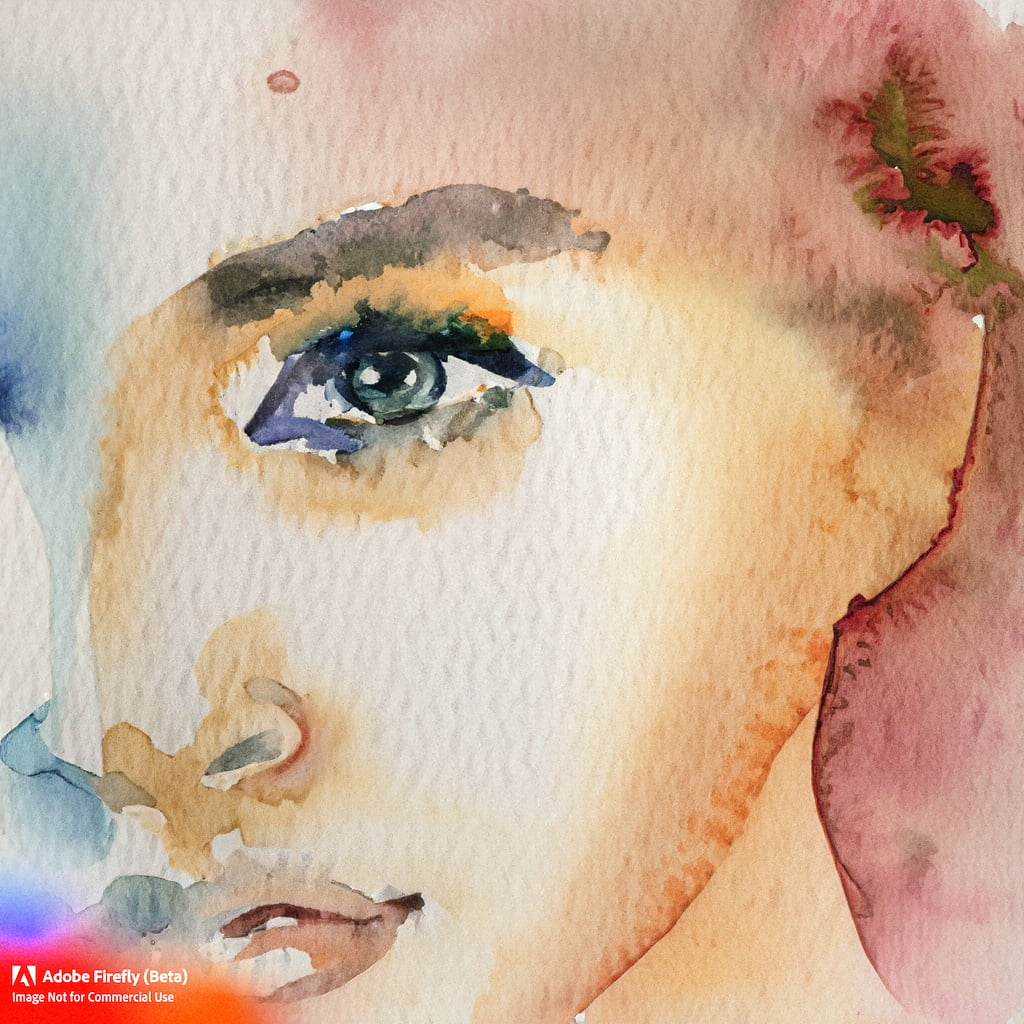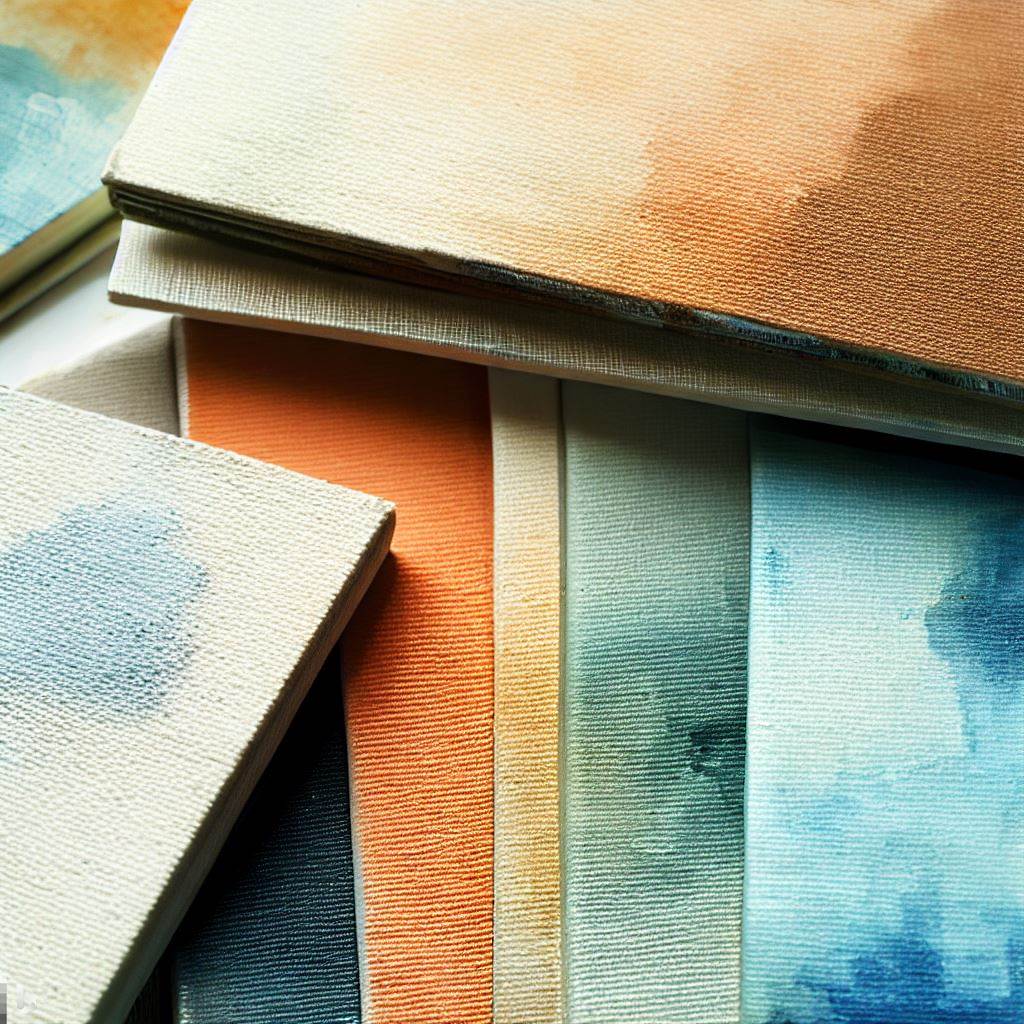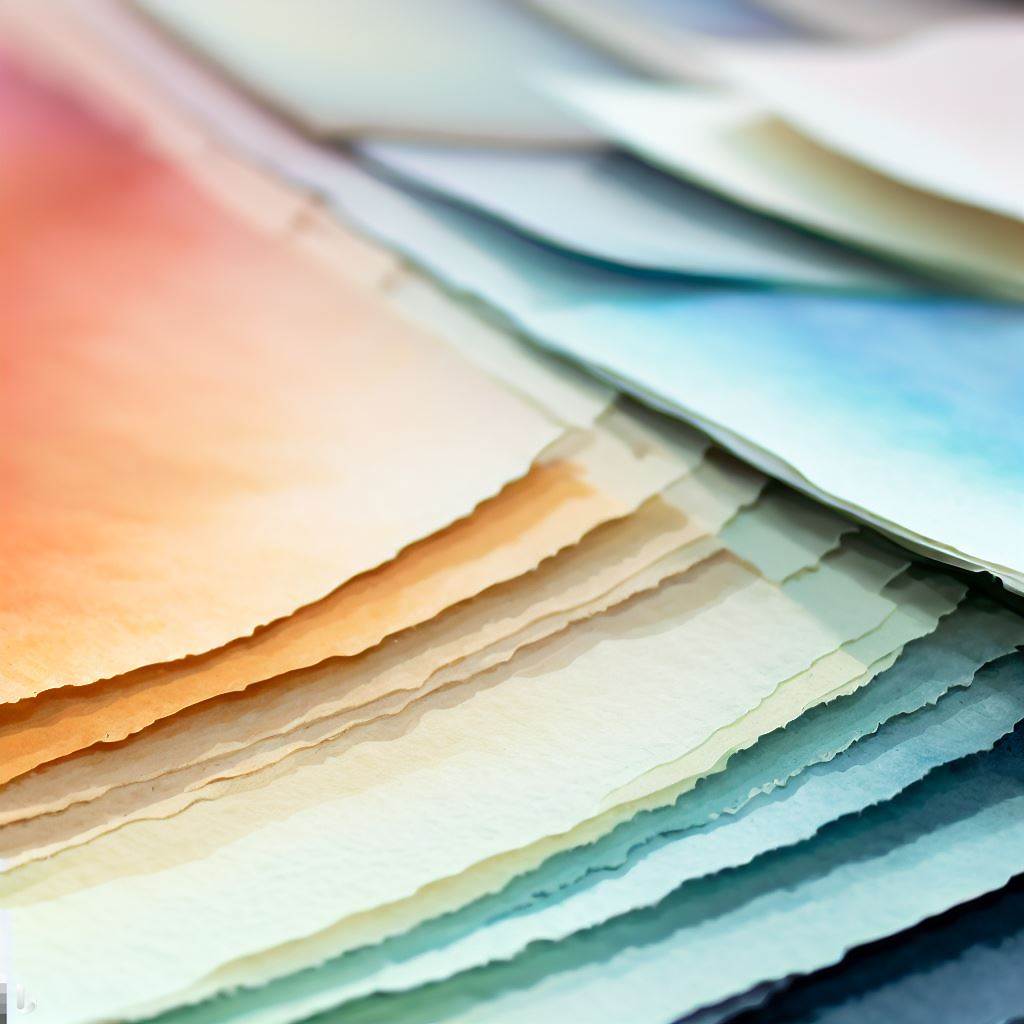Watercolor painting is a captivating and expressive art form that requires skill, technique, and the right materials. Among the essential elements of a successful watercolor painting, the choice of paper plays a crucial role. Selecting the right watercolor paper can greatly impact the outcome of your artwork, as it affects color vibrancy, paint absorption, texture, and longevity.

In this comprehensive guide, we will explore the various factors to consider when choosing watercolor paper. From understanding paper weight and texture to evaluating different types of watercolor paper, we will equip you with the knowledge needed to make informed decisions and enhance your creative process.
What is Watercolour Paper?
Watercolor paper is a type of paper that is specially designed for use with watercolor paints. It is made from a high-quality, long-fibered paper that is able to absorb water without warping or buckling. Watercolor paper also has a smooth surface that allows the paint to flow evenly.
How to Choose the Right Watercolor Paper
Choosing the right watercolor paper involves considering several key factors that influence the overall painting experience and the final result. Here are the essential elements to take into account:
1. Determine the Paper Weight
The weight of watercolor paper refers to its thickness and sturdiness. It is measured in pounds per ream (lb) or grams per square meter (gsm). Lighter weight paper, such as 90 lb (190 gsm), is suitable for sketching and practicing techniques, while heavier paper, such as 300 lb (640 gsm), is ideal for professional artwork and techniques involving more water.
2. Understand the Paper Texture

Watercolor paper comes in different textures: rough, cold-pressed, and hot-pressed. Each texture offers a unique surface that affects paint absorption and brushstroke visibility. Rough-textured paper produces a grainy effect and is best for expressive, textured paintings. Cold-pressed paper strikes a balance between texture and smoothness, making it versatile and popular among artists. Hot-pressed paper has a smooth surface, allowing for fine details and controlled brushwork.
3. Consider Paper Sizing and Stretching
Watercolor paper is available in both “stretched” and “unstretched” forms. Stretched paper is pre-stretched and adhered to a wooden board, reducing the chances of buckling or warping when wet. Unstretched paper requires soaking and stretching on a drawing board or using tape to minimize wrinkling during the painting process. Consider your preferred method of working and the level of convenience you seek.
4. Evaluate the Paper’s Absorbency
Different watercolor papers have varying degrees of absorbency, affecting the vibrancy and transparency of the paint. High-absorbency paper is suitable for wet-on-wet techniques, allowing the paint to spread and blend effortlessly. Low-absorbency paper, on the other hand, is ideal for controlled, layering techniques and preserving vivid colors.
5. Test the Archival Quality
The longevity and preservation of your watercolor artwork depend on the archival quality of the paper. Look for acid-free and pH-neutral papers, as they resist yellowing and deterioration over time. Archival quality paper ensures that your paintings retain their vibrancy and integrity for years to come.
6. Explore Different Types of Watercolor Paper
There is a wide range of watercolor papers available, each offering unique characteristics and suitability for different artistic styles. Here are some popular types of watercolor paper:
a. Cotton Fiber Paper: Made from 100% cotton, this paper is highly regarded for its durability, absorbency, and ability to withstand multiple layers of paint.
b. Cellulose Paper: Economical and widely available, cellulose paper is made from wood pulp and is suitable for beginners or artists who prefer a smoother surface.
c. Handmade Paper: Handmade papers add a touch of uniqueness to your artwork, offering distinct textures and fibers for a more artistic and organic feel.
d. Watercolor Blocks: Watercolor blocks are convenient pads of pre-stretched paper, providing a stable surface to work on without the need for stretching or taping.
Top Brands of Watercolor Paper
| Brand | Type | Cost | Uses |
|---|---|---|---|
| Arches | Cold Press, Hot Press, Rough | $10-$100 | Ideal for professional artists, high-quality paintings, and archival work. |
| Winsor & Newton | Cold Press, Rough | $10-$50 | Ideal for beginners and students, practice paintings, and experimenting with different techniques. |
| Fabriano | Cold Press, Hot Press, Rough | $10-$60 | Ideal for intermediate to advanced artists, high-quality paintings, and mixed media work. |
| Canson | Cold Press, Hot Press, Rough | $5-$50 | Ideal for beginners and students, practice paintings, and experimenting with different techniques. |
| Strathmore | Cold Press, Hot Press, Rough | $5-$30 | Ideal for beginners and students, practice paintings, and experimenting with different techniques. |
The table above shows some of the popular brands of watercolor paper, their types, cost, and uses. Arches is a high-quality paper that is ideal for professional artists, high-quality paintings, and archival work. Winsor & Newton is a good choice for beginners and students who are practicing and experimenting with different techniques. Fabriano is ideal for intermediate to advanced artists who want to create high-quality paintings and mixed media work. Canson and Strathmore are both good choices for beginners and students who are practicing and experimenting with different techniques.
The cost of the paper varies depending on the brand and type of paper.
Tips for using Watercolor Paper
- Stretch the paper: Before you start painting, it is a good idea to stretch the paper. This will help to prevent the paper from warping or buckling. To stretch the paper, wet the paper with a sponge or spray bottle and then tape it to a board. Let the paper dry completely before you start painting.
- Use a light touch: When you are painting with watercolors, it is important to use a light touch. Too much water can cause the paper to warp or buckle.
- Build up the paint: When you are creating a painting, it is best to build up the paint gradually. Start with a light wash and then add more paint as needed. This will help to prevent the paint from bleeding.
- Use a palette: A palette is a great way to mix your watercolor paints. It will help to keep your paints from drying out and it will also make it easier to clean up.
- Have fun! Watercolor painting is a great way to relax and express your creativity. So, relax, have fun, and experiment with different techniques.
Here are some additional tips:
- Use a high-quality watercolor paint: Using a high-quality watercolor paint will give you better results.
- Use a variety of brushes: Different brushes will give you different effects. Experiment with different brushes to find the ones you like the best.
- Use a variety of colors: Watercolor paints come in a wide variety of colors. Experiment with different colors to create your own unique paintings.
- Don’t be afraid to make mistakes: Watercolor painting is a forgiving medium. If you make a mistake, you can always start over.
- Have fun! Watercolor painting is a great way to relax and express your creativity. So, relax, have fun, and experiment with different techniques.
Here are some common mistakes to avoid when using watercolor paper:
- Not stretching the paper: Stretching the paper will help to prevent it from warping or buckling.
- Using too much water: Too much water can cause the paper to warp or buckle.
- Not building up the paint gradually: Building up the paint gradually will help to prevent the paint from bleeding.
- Not using a palette: Using a palette will help to keep your paints from drying out and it will also make it easier to clean up.
Frequently Asked Questions (FAQs)
- Q: Can I use regular printer paper for watercolor painting?
A: It is not recommended to use regular printer paper for watercolor painting, as it lacks the necessary thickness and absorbency. Watercolor paper is specifically designed to handle water-based paints. - Q: Should I choose rough, cold-pressed, or hot-pressed watercolor paper for a specific technique?
A: The choice of texture depends on the effect you want to achieve. Rough paper adds texture and is ideal for expressive, loose paintings, while cold-pressed paper is versatile and suitable for most techniques. Hot-pressed paper is smoother and works well for detailed work. - Q: What is the difference between cellulose paper and cotton fiber paper?
A: Cellulose paper is made from wood pulp and is more affordable, while cotton fiber paper is higher in quality and offers superior durability and paint absorption. Cotton fiber paper is often preferred by professional artists. - Q: Do I need to stretch watercolor paper before painting?
A: Stretching watercolor paper is recommended for heavier washes or prolonged exposure to water. However, pre-stretched watercolor blocks offer a convenient alternative for artists who prefer not to stretch their paper. - Q: How can I test the absorbency of watercolor paper?
A: To test the absorbency, wet a small area of the paper and observe how quickly the water is absorbed. High-absorbency paper will absorb the water almost immediately, while low-absorbency paper will resist the water and take longer to absorb it. - Q: What is the best paper weight for beginners?
A: For beginners, a paper weight of 140 lb (300 gsm) is a good starting point. It offers a balance between affordability and quality, allowing you to explore different techniques without the paper buckling.
Conclusion
Choosing the right watercolor paper is a vital step in creating beautiful and lasting artworks. Consider the weight, texture, absorbency, and archival quality when making your selection. Additionally, explore different types of watercolor paper to find the one that best suits your artistic style and preferences. With the right paper, you can enhance your watercolor painting experience and bring your creative visions to life.
Remember, the key is to experiment and find the paper that resonates with your unique artistic voice. Happy painting!

